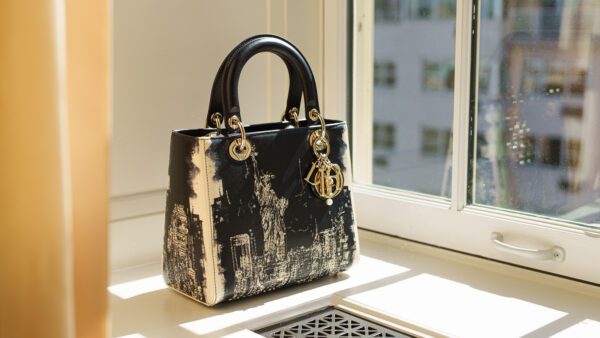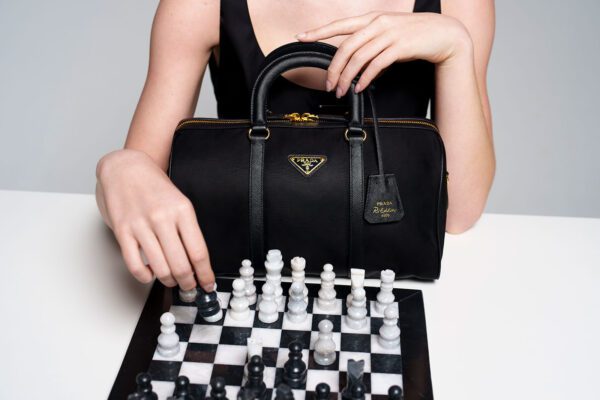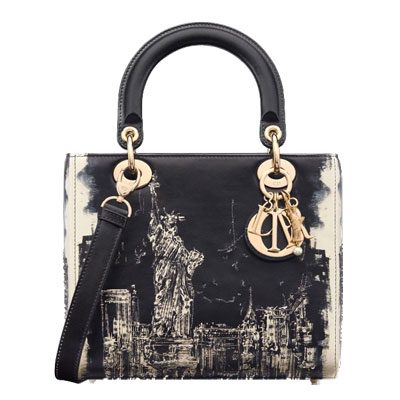Before we get going here, I want to be clear – this discussion is on “inspired” items, not counterfeit bags or any garment that misuses another brand’s name or logo. We would never encourage or condone that!
It’s no secret in these parts that some of our readers get very punchy when they feel as though one designer has taken liberties with the work of another. The subject of originality is one that’s near and dear to almost any fashionista’s heart, likely because we’ve all been conditioned to seek out The Next Big Thing. When a designer bases a garment too closely on what has already been done, it flies directly in the face of the pursuit of the new. Retro is one thing, ripoff is another.
Or is it? Johanna Blakley, a University of Southern California researcher that specializes in media and intellectual property, thinks that perhaps the well-worn practice of fashionable copycatting is actually what continues to drive fashion forward and make designers better and more original. She makes an interesting case in the video above, and we’ll discuss it after the jump.
In case you’re unfamiliar with how trademark protection differs from copyright protection, here’s the basic distinction: trademark protects registered brand identifiers (the Louis Vuitton monogram, for example), while copyright protects intellectual property and creative work (the overall design and shape of the Speedy bag). Just like any other business, fashion designers enjoy trademark protection on their names and logos, but unlike musicians and writers, they don’t have any copyright protection on their work. According to the law, fashion is classified as too utilitarian to receive additional protection.
As Blakley explains in the video, that means that basically any brand can rip off any garment as long as they don’t reproduce the original company’s trademark. Many designers, most vocally Diane Von Furstenberg and the CFDA, think that designers should be given the same consideration as musicians, which could potentially mean that it would be illegal for anyone but Von Furstenberg to manufacture patterned wrap dresses, for example.
The age-old argument in favor of copyright protection is that without ownership, there’s no incentive to innovate. The alternative, I guess, is supposed to be that designers rip each other off into oblivion until no one has any brand identity or sense of creativity anymore. Has that happened in fashion yet? It doesn’t seem so – trends are now moving more quickly than ever and designers are being forced to find new angles and new ideas more rapidly.
Blakley brings up another good point in that regard – could copyright protection and fashion trends as we know them coexist? Probably not, and trends are what push sales for many brands and retailers. They guide shoppers toward what to buy and how to stay current, and if everyone in fashion was forced to make something completely different than everyone else, it might be a little difficult for the average shopper to put together a cohesive outfit, unless all of the components came from the same brand.
Would it even be possible for every designer to simultaneously do something completely different than any other? Again the answer is probably not, and I wouldn’t want to be the government official tasked with deciding which designers get to use which materials, shapes and techniques. Also, there’s the issue of deciding what makes a garment substantially different than any other – does a menswear company need to be forced to prove that its white button-down shirts are substantially different from any other?
Ultimately, copying is a part of the creative process at every level of fashion, and being able to pick the very best from the pastiche of garments past to mold in to something new is part and parcel of being a successful designer. Similarly, the ability to quickly recreate those looks keeps stores like Forever 21 in the black and forces luxury brands to constantly chart new territory and make better, harder to copy clothes and accessories. I went in to Blakley’s lecture dubious, and although I didn’t agree with everything she had to say, she certainly makes a compelling case in favor of a designer’s right to rip things off. As always, let us know your take in the comments.
Note: there seems to be confusion over how to spell Johanna’s last name, but I’m going with the spelling used in her TED bio and USC page instead of the one used in the video still above.













